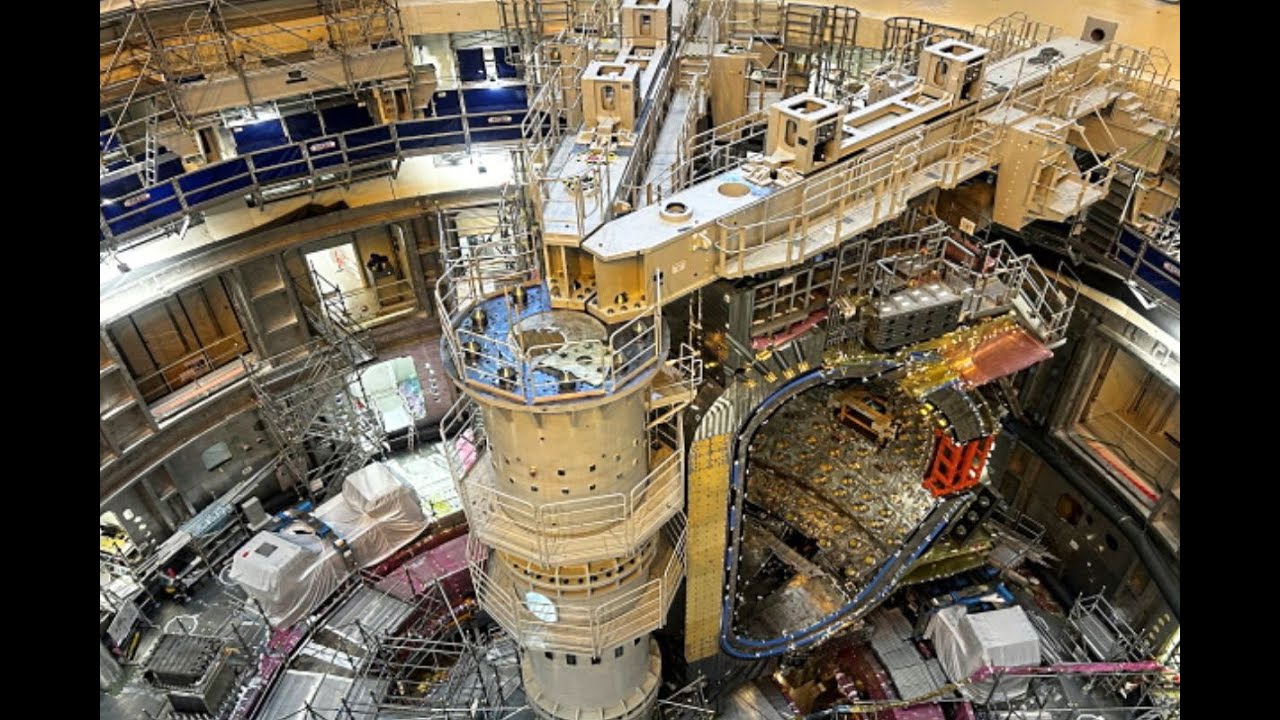The world’s most ambitious scientific undertaking, often hailed as the largest project in human history, has entered its most critical phase — the attempt to recreate the very power source of the stars. Scientists and engineers working on the International Thermonuclear Experimental Reactor (ITER) in southern France are now moving closer than ever to achieving controlled nuclear fusion, a breakthrough that could redefine the future of energy.
A Colossal Human Endeavor
ITER is not just a scientific experiment. It is an unprecedented collaboration between 35 nations that began over three decades ago with the dream of harnessing the energy that fuels the sun. The project’s scale dwarfs even the Apollo moon missions, both in terms of technical complexity and international coordination. The facility itself is a towering marvel of engineering, where more than 10,000 tonnes of equipment are being assembled like an intricate cosmic puzzle.
For years, the world has been watching with cautious optimism as ITER pushed through delays, funding challenges, and design hurdles. Now, the project is at the cusp of a defining moment: the first attempt to generate plasma at conditions replicating those at the heart of stars. The upcoming phase is widely viewed as humanity’s best chance yet to prove that sustainable fusion power is viable on Earth.
Also Read
Why Fusion Power Matters
Unlike conventional nuclear power, which relies on fission — the splitting of atoms — fusion seeks to join lightweight atomic nuclei, releasing immense amounts of energy. This is the same process that drives stars, including our sun. If mastered, fusion could provide a virtually limitless, carbon-free, and safe source of energy. Unlike fossil fuels, it produces no greenhouse gases, and unlike fission, it does not generate long-lived radioactive waste.
The stakes could not be higher. With climate change intensifying and global demand for clean energy increasing, the success of ITER could rewrite the energy landscape for generations. Scientists estimate that a successful fusion power plant could supply electricity reliably for millions without the risks associated with traditional energy sources.
Entering the Plasma Era
At the heart of ITER’s critical phase is the creation of plasma — a superheated, electrically charged state of matter where fusion reactions can begin. This plasma must reach temperatures exceeding 150 million degrees Celsius, more than ten times hotter than the core of the sun. To confine it, ITER’s engineers rely on a powerful magnetic cage known as a tokamak, shaped like a giant doughnut.
This vast machine, lined with superconducting magnets weighing thousands of tonnes, will attempt to hold the plasma steady long enough for fusion reactions to occur. Achieving this is no simple task. Even minor instabilities can cause the plasma to escape confinement, collapsing the experiment. Mastery of this challenge would mark a turning point, placing humanity on the cusp of harnessing star power.
An International Test of Unity
The project represents not only science but global solidarity. Nations that often find themselves at odds geopolitically — including the United States, Russia, China, India, Japan, South Korea, and the nations of the European Union — have all invested in the project. This unity is emblematic of the belief that no single country could take on such a monumental task alone.
Thousands of scientists, researchers, and engineers from across the globe converge in Provence to work shoulder-to-shoulder on the reactor. It is this spirit of collaboration that underscores ITER’s place in human history, transcending borders in the pursuit of a shared dream.
Challenges Ahead
Despite the optimism, the journey remains fraught with uncertainty. Technical hurdles, the immense cost of the project — estimated at over $25 billion — and the sheer precision required for assembly continue to weigh heavily. Each component must align with microscopic accuracy, as even the smallest error could jeopardize the system.
There are also lingering questions about whether achieving sustained fusion power is truly possible within this generation. While the first plasma test may occur within the next few years, translating that breakthrough into a workable, commercial energy solution could take decades. Skeptics argue that humanity cannot afford to wait. Advocates counter that fusion represents the only long-term solution capable of meeting global energy demands sustainably.
A Turning Point for Humanity
This phase of ITER is not simply a scientific trial; it is a test of human determination, vision, and perseverance. Success could unlock a new era where energy scarcity and climate anxieties are relics of the past. Failure, however, would set back the dream of fusion for years, if not decades.
As the world watches, the stakes extend far beyond the laboratories of southern France. For the scientists and engineers on the ground, the upcoming plasma ignition is the culmination of lifetimes of work. For humanity at large, it may be remembered as the dawn of a revolution — when the dream of capturing starfire became more than just imagination.
FAQs
What is ITER?
ITER is the International Thermonuclear Experimental Reactor, the world’s largest scientific project aimed at demonstrating the feasibility of nuclear fusion as a practical energy source.
Why is fusion considered better than fission?
Fusion produces far more energy without long-lived radioactive waste or the risk of nuclear meltdowns. It also has near limitless fuel supply from elements like hydrogen in seawater.
When will ITER conduct its first plasma test?
The first plasma experiments are expected within the next few years, marking the most critical milestone in the project’s history.
Can fusion power replace fossil fuels?
If successful, fusion power could become a leading clean energy source. However, commercial reactors are still decades away, meaning other renewable sources will remain essential in the short term.
Why is ITER a global project?
The scale, cost, and technical complexity of ITER are beyond the reach of any one nation. Collaboration ensures shared expertise, resources, and a unifying vision for clean energy.












